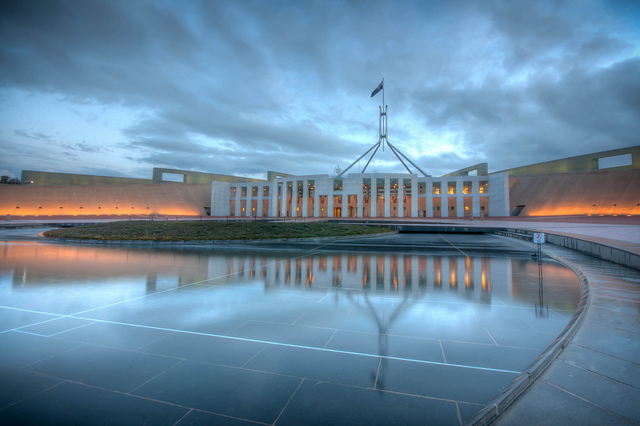Australian politics has grafted presidential habits onto a system of cabinet government. And recently, the Oz body politic has rejected the graft.
The mismatch between presidential aspiration and parliamentary power introduces stutters and stuff-ups into the Canberran process. If, for instance, ASPI’s brief is to ponder the workings and objectives of Oz grand strategy, does the Institute focus on the traditional cabinet framework or the day-to-day presidential reality?
Rudd, Gillard and Abbott each show in their own ways what happens when a president pushes too hard against cabinet and its parliamentary setting.
Ponder the volatility since Howard was ejected in 2007. Four PMs in less than eight years—Rudd, Gillard, Rudd and now Abbott—tell of tempestuous times. The problems those vastly different leaders had in running the system point to systemic problems rather than mere issues of personality (large as those might be).
In his first, flaming form, PM Rudd sidelined cabinet and bullied caucus. Cabinet and caucus visited brutal judgement before Rudd’s first term was out.
Gillard was a classic apparatchik with all the skills to make the system work. But the atmosphere after the Rudd assassination was poisonous. Gillard lamented that she could never get cabinet to run smoothly because of the leadership tensions, constant malicious leaks and the need for ministers to stake out positions in cabinet they could use in caucus and brief/leak accordingly. Being presidential didn’t cow cabinet.
Gillard’s memoirs detail her problems with Foreign Ministers Rudd and Carr: ‘After the 2010 election, I never had a Foreign Minister I could rely on.’ Hard to do grand strategy from there. Gillard looked longingly to a time before she entered parliament, when strong Labor PM/presidents had equally strong cabinets: ‘Is it nostalgia to yearn for something you never experienced, like the respite of a cabinet with the kind of solidarity shown for most of the Hawke and Keating era?’
Solidarity is ever relative. The Hawke and Keating cabinets featured giant egos. Big personalities fought big battles. But the eternal tensions between cabinet, caucus and president had balance. The best Oz presidents have strong cabinets; weak cabinet accentuate wobbles and wilfulness.
The similarities of the dysfunction under Rudd, Gillard and Abbott are because each misunderstood or misused their presidential prerogatives.
Abbott has given us a new term for a presidential decision that staggers quickly from poor process to technicolour disaster: ‘Captain’s call.’ In the ‘Yes Minister’ lexicon of warnings to ministers, ‘Captain’s call’ now rates between controversial and courageous. Here’s Sir Humphrey to explain: ‘Controversial only means “this will lose you votes”. Courageous means “this will lose you the election”!’
For some time to come, any minder cautioning a minister will not have to resort to ‘courageous’. They will merely have to say, “Oui, mon capitan!’ to summon up the perils of the Captain’s call.
Abbott’s near-death experience in last month’s leadership vote demonstrated the limits of his power as captain and president. The revolt came from the backbench. But after Abbott survived, the message from Liberal MPs was that it was time for cabinet to operate properly and to assert control. In this context, read ‘control’ as cabinet performing its traditional role. Responsibility to change direction was handed equally to Abbott and cabinet. No more Captain’s calls.
In the way of Canberra’s recurring rhythms, the spills and thrills that upset Rudd and Gillard and now confront Abbott are familiar. Australia produces strong leaders who seek to dominate every sphere they touch. Australian prime ministers get most of what they want from cabinet—certainly on major decisions. Since 1901, the rule is that the PM prevails. Modern presidential illusions or delusions have supercharged the rule towards breaking point.
Extra presidential steroids went into Parliament’s water in the move from the Old to the New Parliament in 1988. In the cramped Old Parliament, there was no room for a big presidential court. The lines from small ministerial offices to Canberra departments were short and tight. The bureaucracy had a stronger grip than exists today.
Moving into the New Parliament allowed the creation of an executive wing at the rear of the building—the Canberra version of the West Wing. The explosion in the number of staffers in our West Wing has fed presidentialism.
The ever faster media cycle also gets the blame. But 400 ministerial minders with no automatic departmental loyalty—beholden to the PM’s office and their minister—have done as much to alter the tone and throb of power. The ‘building effect’ in Oz politics of the New Parliament—offering rooms and growth—has been felt in presidential habits and the blooming of the Senate committees. Since Howard, however, PMs have been taught anew the limits and pitfalls of presidential power.
Graeme Dobell is the ASPI journalist fellow. Image courtesy of Flickr user DonkeyHotey.


